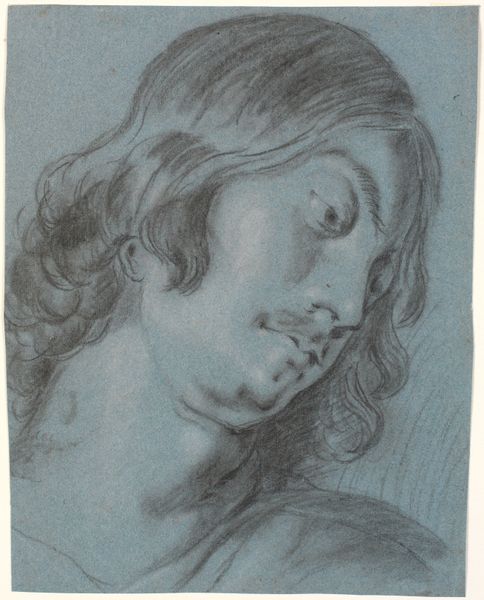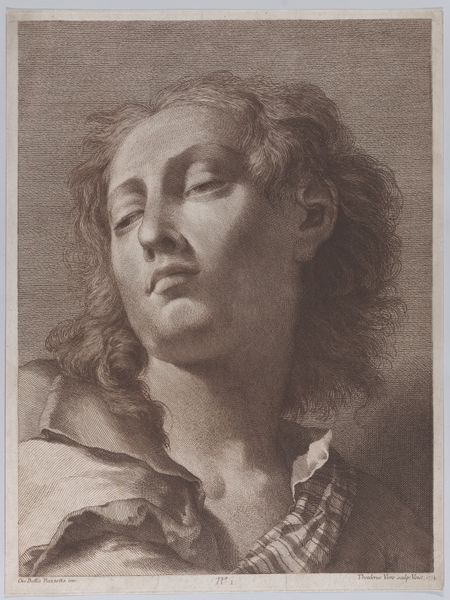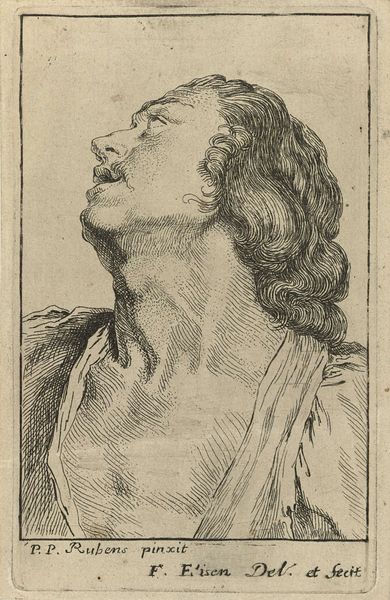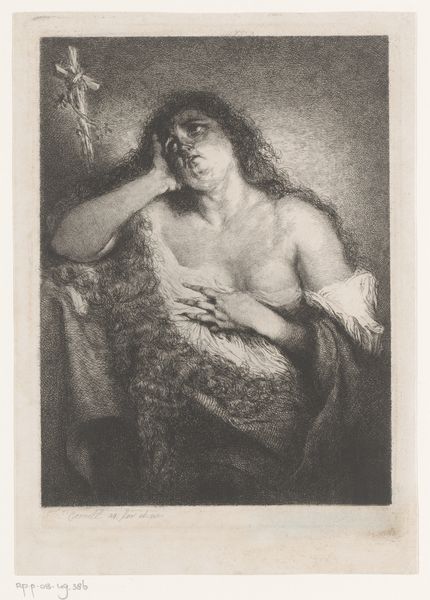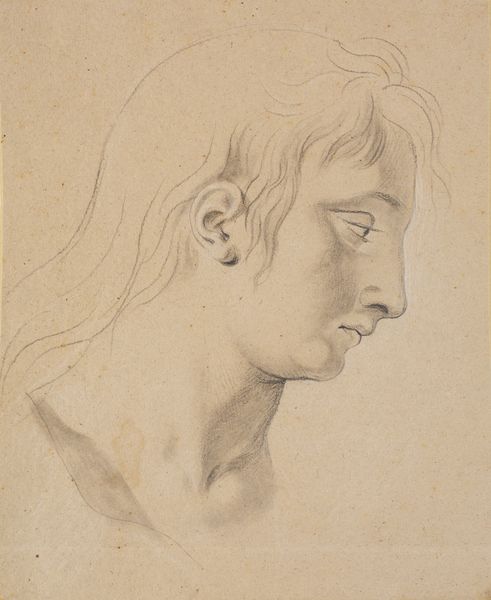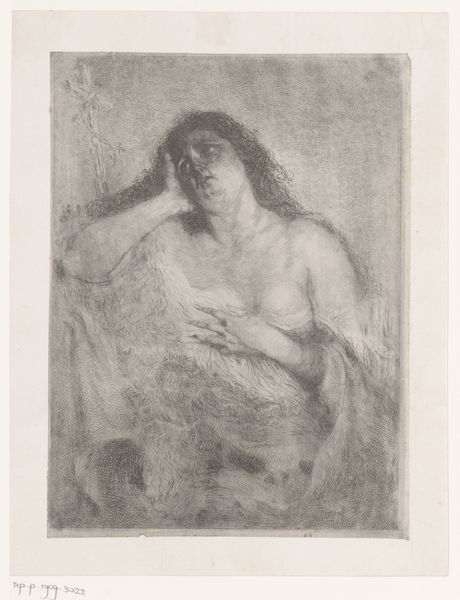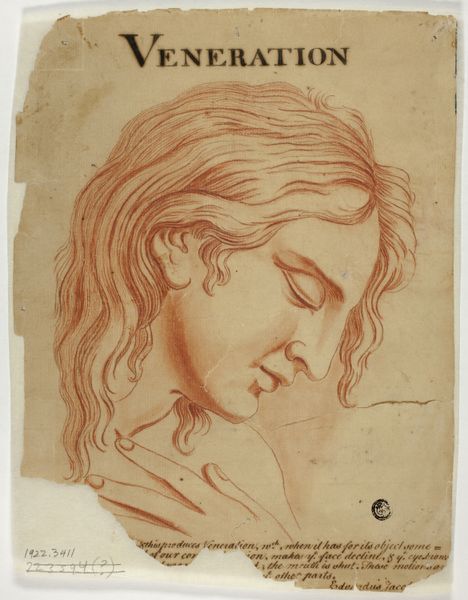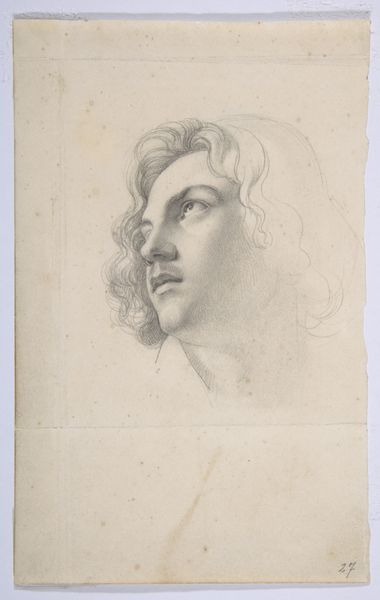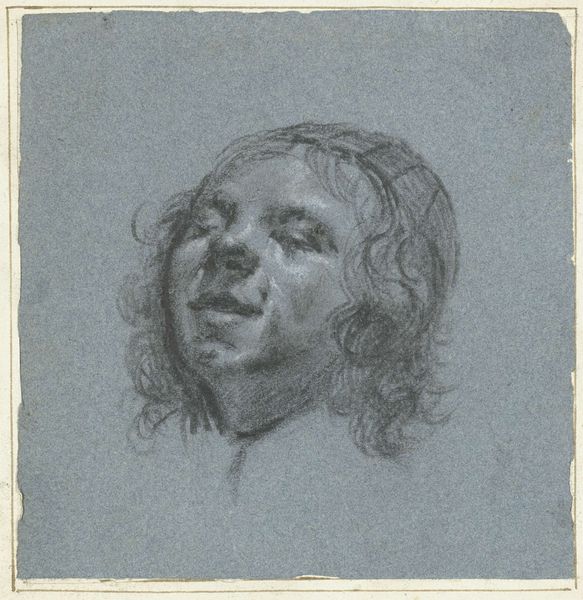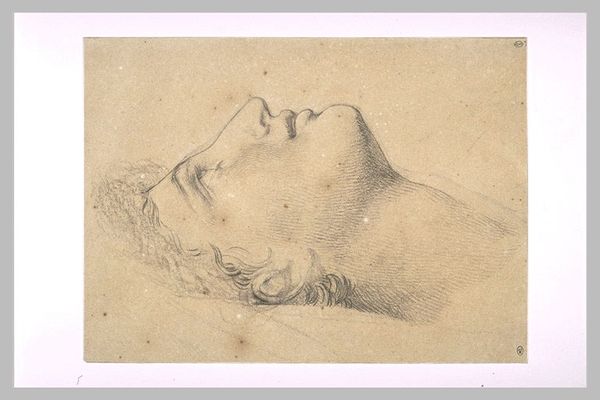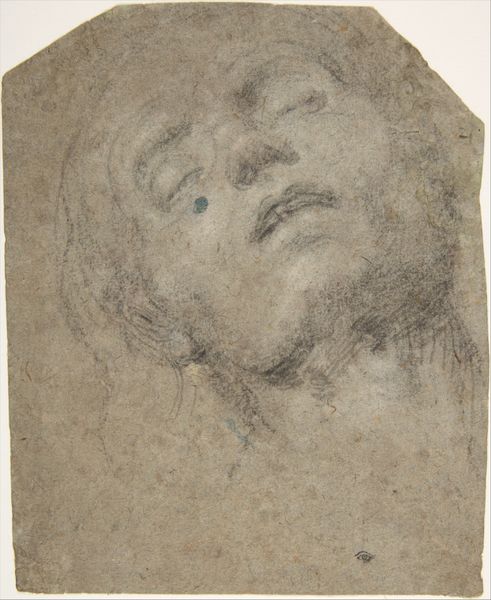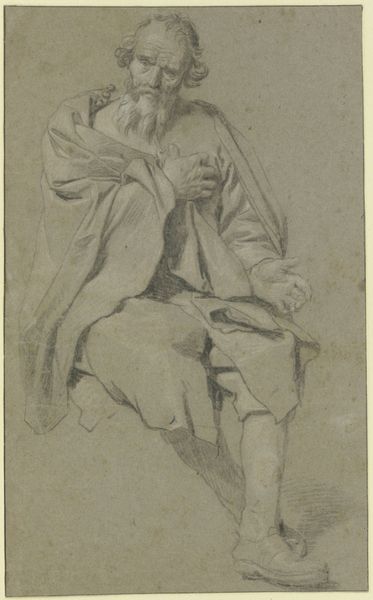
Den bodfærdige Magdalena, brystbillede mod højre 1625 - 1677
0:00
0:00
drawing, charcoal
#
portrait
#
drawing
#
baroque
#
charcoal drawing
#
figuration
#
pencil drawing
#
portrait drawing
#
charcoal
#
academic-art
Dimensions: 464 mm (height) x 377 mm (width) (bladmaal)
Curator: Look at the subtle way Heinrich Dittmers, around the mid-17th century, used charcoal to capture "The Repentant Magdalene, Bust Facing Right." It’s a study, really—an academic drawing of a devotional figure rendered with such palpable intensity. Editor: There's an almost unsettling vulnerability in that upward gaze, wouldn't you say? It pulls you in, yet feels detached. Is this about devotion, or performative piety dictated by the period’s religious pressures on women? Curator: Interesting point! Consider the physicality of the charcoal, though. You see how he builds up the shadows around the eyes, the curve of the neck? The medium itself – charcoal, readily available and inexpensive – suggests a work focused more on process, a sort of exercise in draftsmanship. It certainly isn’t as elevated or polished as we might expect for devotional iconography. Editor: True, but the rawness is what resonates! Magdalene’s representation throughout art history has been repeatedly scrutinized. She’s a fallen woman seeking redemption, a symbol co-opted across varying cultural and religious narratives. Here, her expression evokes something profound. Perhaps Dittmers intended to explore the interiority, a perspective of women rarely explored. Curator: Possibly. But let’s not overlook the craftsman’s hand! Note how Dittmers layered the charcoal, creating tonal depth. It’s more than mere reproduction; there's artistic labour evident in those expressive lines, each one an interaction between hand, tool, and paper. Did he intend to provoke deeper meanings, or was it honing technique? I am not certain! Editor: And the gaze! In this piece Magdalene avoids meeting ours, complicating the relationship between viewer and subject. Instead, she's seeking forgiveness, reinforcing power dynamics. Who gets to grant absolution, and why? Considering her role within a patriarchal church—her repentance becomes a symbol, her voice muffled and constrained. Curator: Indeed. The materials, their treatment, the processes enacted – these all offer a glimpse into how artistry served not just symbolic depiction, but its daily practice as labor. Editor: Precisely. And within those practices lie embedded societal narratives shaping the perception and roles of people—like Magdalene herself—through the ages. Curator: Looking at the work now, I am particularly drawn to the artist’s sensitivity to chiaroscuro, which is amazing for a work so simply rendered in charcoal. Editor: Absolutely. Its emotional resonance is what stays with you, even beyond the materials and techniques on display.
Comments
No comments
Be the first to comment and join the conversation on the ultimate creative platform.
